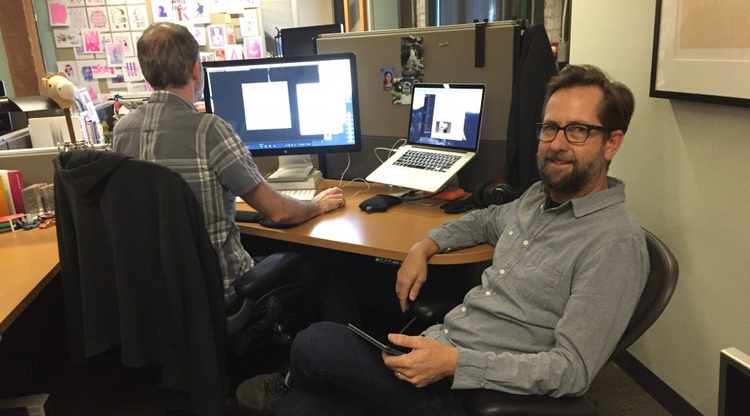Anthropology: The Secret Sauce for Building Tech We Love


http://blogs.adobe.com/conversations/files/2015/12/Charles-PearsonConversation.jpg
Historically, anthropologists have mined everyday life for patterns in human behavior — from Franz Boas’ fieldwork with Native Americans in the early 20th century to Margaret Mead’s study of “coming of age” rituals in Samoan society in the 1920s. But today, cultural anthropology is helping shape product development, in which the study of human behavior is helping to fine-tune how people interact with machines, and vice versa.
One of the earliest examples of anthropology’s use in shaping modern technology is from 1979, when a cultural anthropology intern working at the famous Xerox Palo Alto Research Center (PARC) studied two brilliant computer scientists struggling to make double-sided copies on a new state-of-the-art Xerox copier.
Urban legend has it that an “ah-ha” moment, documented on tape in “When User Hits Machine,” led to the development of the ubiquitous green start button. While the button was actually there already, the research demonstrated a need to better understand how users interact with technology.
Today, as tech companies strive to compress their time to market for new products, anthropology is helping to ensure that new rollouts are user-friendly from the get-go.
Anthropologist Charles Pearson just finished two years immersed in the culture of San Francisco product designers. He was part of an interdisciplinary team that refined releases of Adobe Photoshop throughout 2014-2015.
Charles spent his time “in the field” at agencies and studios studying product designers ‒ who now make up more than half of the Photoshop user base. His research included not just studying their relationship to Photoshop, but their larger professional lives, ambitions, and community norms. His goal was to understand what made designers tick, and where their goals and values aligned or mis-aligned with those of Adobe.
“I would spend a few days a week — watching, listening, asking questions, and participating when appropriate,” he says. “I was new to this design world, but it was clear to me that the epicenter, the energetic core of web and app design, was right there and new practices and communities were emerging that Adobe needed to pay attention to.”
Pearson’s work helped focus the Photoshop team on enhancing the user experience. “I think my research contributed to Photoshop on a bunch of different levels beyond just new features,” he says. “It also led us to think about ‘how’ we were going to develop and communicate with users.”
Moreover, the results from his work served as a catalyst for the development of the new Art Boards and Design Space features in Adobe Photoshop CC 2015.
Art Boards is a responsive design tool that makes it easier for product designers to create for multiple devices. Design Space streamlines the Photoshop interface and workflows to better meet the needs of web, UX, and mobile app developers who craved a lightweight, focused tool. Additionally, It was rolled out as a beta feature to enable Adobe to refine its usability based on user feedback.
“While Photoshop has emerged as a leading product design tool, it did not fully address the evolving needs of customers,” says Pearson. “But we listened over the past two years and figured out how to give them a voice and a role in the feature development of Photoshop. Our emphasis was on empathy — understanding users and their problems on a deeper emotional level.”
That perspective on using feedback for fine-tuning is reflected in a message waiting online for Photoshop users: _“_This feature is an early look at a new project we’re working on. We’re not yet there completely, and we know it. We’d like to hear what you think of the direction this feature is taking, and help us shape it into what you want it to be.”
Ricoh Innovations Corp. is another company that uses insights from fieldwork, prototyping, user feedback, and trials in its product development process. Anthropologists at Ricoh are studying user behavior to help develop emerging technologies, such as computational optics, mobile visual communication and cloud-based collaboration.
“I have been conducting ethnographic research for the past two years on retail execution,” says Tiffany Romain, one of two research anthropologists that are part of a team of software engineers, designers and strategists at Ricoh. “Our company is building a system that is designed to help merchandisers see and make sense of how their products fit in the ecosystem of a retail shelf. Using proprietary computer vision algorithms, the system enables a rep to take pictures of the shelf with a mobile device which are then analyzed with smart image recognition technology.”
Another trailblazer in the use of anthropology to help shape the functionality of its products is Intel. In fact, the company has integrated more than 100 social scientists and designers into its product and sales/marketing teams.
Real world applications of their work are appearing in wearable gadgets powered by tiny Intel chips, and even personal robots that learn from a user’s preferences.
In a recent interview with the Discovery channel, Intel’s Genevieve Bell, a world-renowned anthropologist, reflects on the role of anthropology in the product development cycle. “People are always amazed when I talk about being an anthropologist at Intel because they can’t imagine what that job would possibly entail. Knowing what people do with technology today can help you build the technology for tomorrow.”